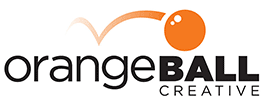
Inversion Thinking: Changing the Questions We’re Asking to Change the Results We’re Achieving
In a recent meeting, a friend brought up the concept of Inversion Thinking. What is it? Simply put, the concept of Inversion focuses on thinking in reverse to solve problems and reduce risk. Instead of focusing on how to achieve a desired outcome, Inversion Thinking encourages you to consider the opposite question. “What do we need to do to avoid unwanted outcomes or failures?”
The concept in practice is pretty simple. To apply Inversion Thinking to a challenge, you follow these steps:
- Identify the problem or decision you are facing.
- Describe the positive outcome you’re trying to create.
- Then, consider the negative outcome or what could go wrong.
- Analyze the factors leading to that negative outcome.
- Develop strategies to prevent or mitigate those negative factors.
Let’s apply Inversion to a coffee shop’s decision to introduce a new coffee blend into their menu. Here’s what it looks like in practice…
Identify the Problem/Decision
The coffee shop is considering adding a new, unique coffee blend to its menu to attract more customers and increase sales.
Positive Outcome Desired
Increased customer traffic, higher sales, and a reputation for offering distinctive and desirable coffee blends.
What Could Go Wrong
- Low Sales and Wasted Inventory: The new coffee blend may not sell well, resulting in wasted inventory and a financial loss.
- Negative Customer Feedback: The new blend could receive negative reviews, impacting the coffee shop’s overall reputation.
- Staff Training: Baristas may struggle to prepare the new blend consistently, affecting customer experience.
Analyze Factors Leading to Negative Outcome
- Low Sales and Wasted Inventory: Conduct market research to understand customer preferences and demand for the new blend.
- Negative Customer Feedback: Develop a quality control process to ensure the blend meets customer expectations, and seek feedback before the official launch.
- Staff Training: Provide comprehensive training to baristas and establish standard operating procedures for preparing the new blend.
Develop Strategies to Prevent or Mitigate Negative Factors
- To address low sales, conduct a soft launch or limited-time promotion to gauge demand before committing to a large inventory.
- For negative customer feedback, involve customers in taste tests and refine the blend based on their input.
- Ensure that staff training includes ongoing assessments and feedback mechanisms to guarantee consistency in preparation.
In the coffee shop example above, applying Inversion Thinking increases the chances of a successful product launch, minimizes risks, increases customer satisfaction, and ultimately contributes to the coffee shop’s long-term success.
The alternative to Inversion Thinking, which many of us do regularly, would be to think of all the things we have to do to be successful in achieving our goals. That is great, but as you can see in the example above, it only covers some of the necessary bases. By adding Inversion to the process, we’re able to eliminate challenges proactively, and we also get clear on what we DON’T want as we’re exploring what we DO want.
Call-to-Action
Looking at your next goal, challenge, or team objective, add some Inversion Thinking to your conversations. Yes, get focused on what you want to have happen and what success will look like. At the same time, use Inversion to get clear on what success doesn’t look like and what you don’t want to have happen. Then, create some guardrails to protect your success.
Happy Inversion!
Ready for more?
OrangeBall Insights has always been a place to share ideas, explore our purpose and leadership, and chat a little bit about marketing. If this resonated and you’d like to receive weekly ways to bounce higher every day, subscribe here.



